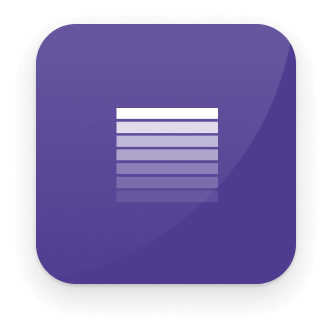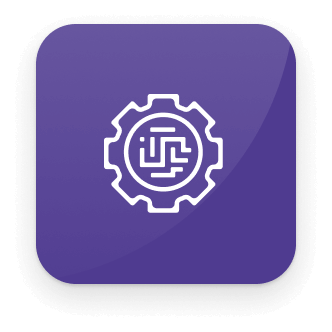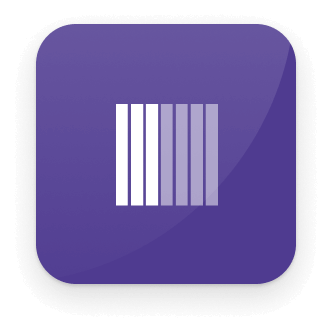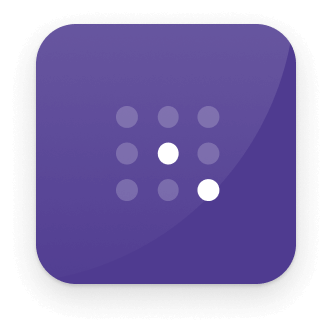- Both users experience a drop in mood when navigating a messy house
- Messiness affects mood on a daily basis
- Messiness reduces efficiency in cooking and getting ready for work
Loading
Case Study - 2020
Cleaning Quest

In 2020 I used UX design principles and modern gamification concepts to create a magnetic refrigerator chores game.
While not a typical UX project, this is one of my personal favorites. I’ve also used it throughout my career in UX presentations and mentorships.
My Role
UX Designer & Product Owner
Related Experience
World Wide Technology & Fennec Creative
The Problem
House cleaning - the chore that never ends. My husband and I share a mutual love of procrastination when it comes to tidying, and when the pandemic hit in 2020 we found ourselves in a chronically messy house.
I wanted to find a way to motivate us while bringing a bit of creative joy into our lives. I decided to put user-centered design to the test, and got to work.
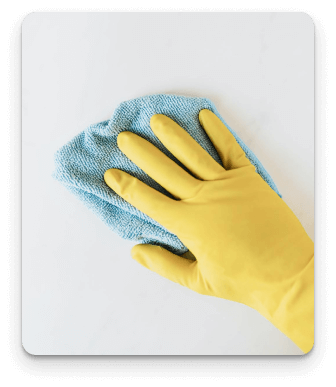
Meet the Users
The number of users for this project was two - one of which was myself. This made getting unbiased data essentially impossible. I decided to try anyway.
I kicked off this project with a user interview and contextual inquiry. My husband, being a wonderfully good sport, played along with both and I ended up getting a lot of useful insights.
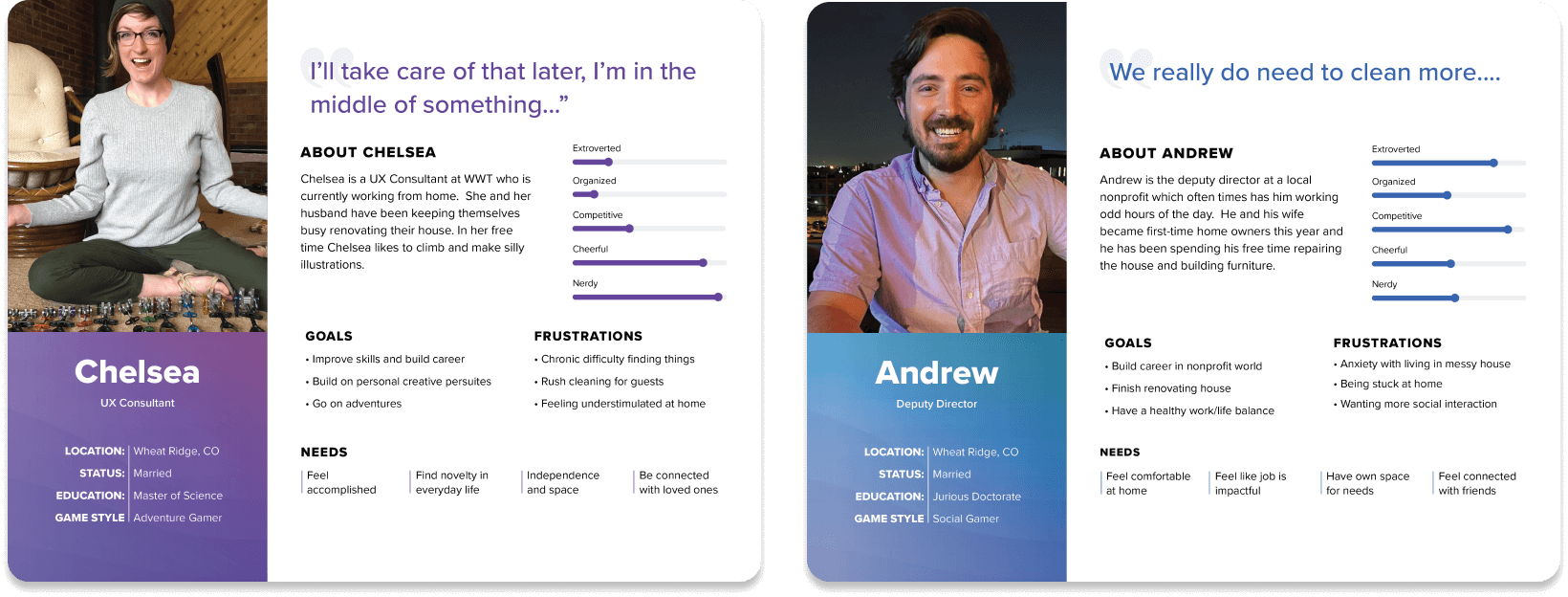
Proto-Journey Mapping
I created two proto-journey maps with a template I created for online workshops at World Wide Technology.
This helped me visualize our daily habits and identify key moments.
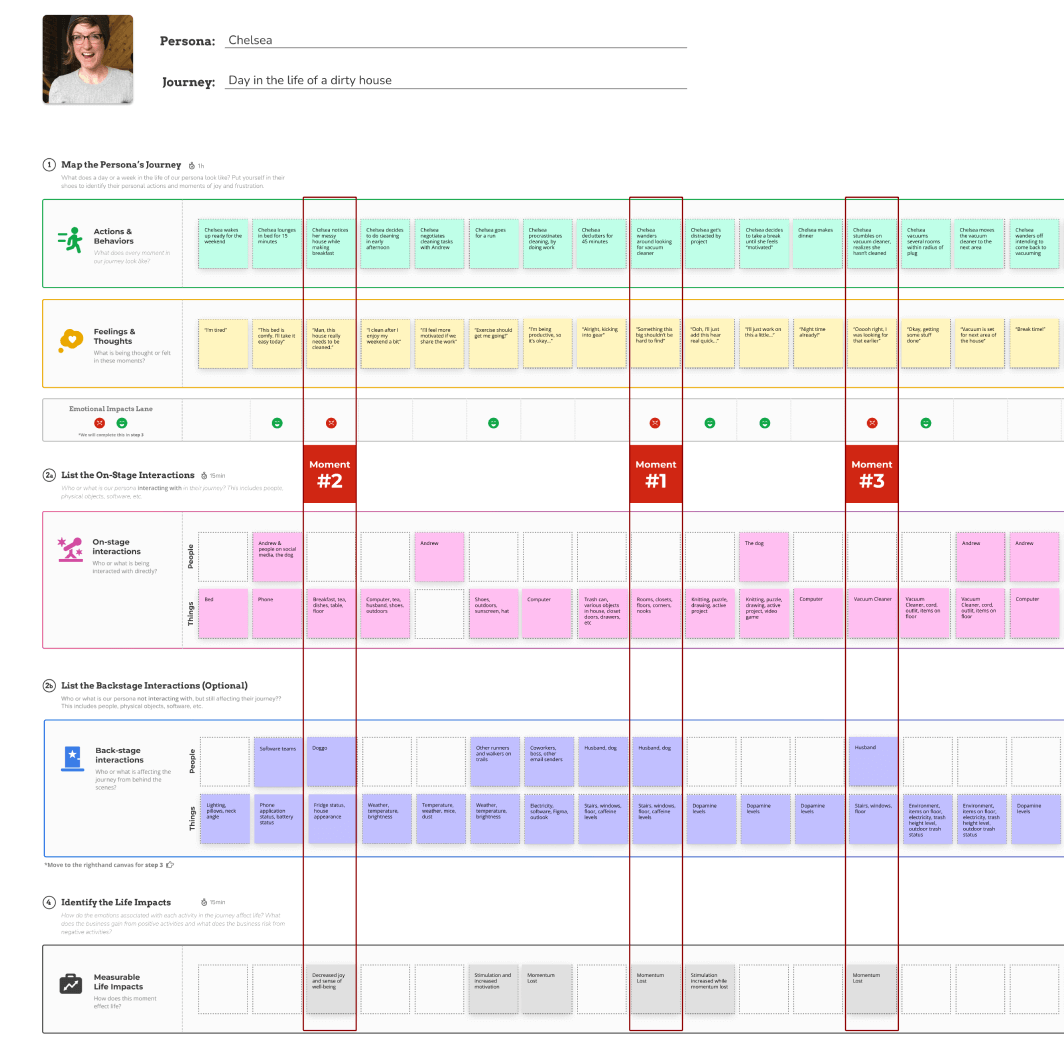
Key Take-Aways
House messiness takes away from everyday contentment
House chores are unrewarding and boring by nature
Rushed-cleaning takes a toll on weekends
Competition and reward are strong motivators
Users want to improve, but don’t know where to start
Key Design Principles
Goal-Gradient Effect
Tesler’s Law
Postel’s Law
Flow
Cognitive Load
Peak-End Rule
source: www.lawsofux.com
The Octalysis Framework
The Octalysis Framework is a design framework that combines behavioral science concepts with game-centric design.
I chose this framework as a starting point because it was the leading solution in gamification at the time. It also had a lot of resources available, which provided a great opportunity for me to expand my industry knowledge.
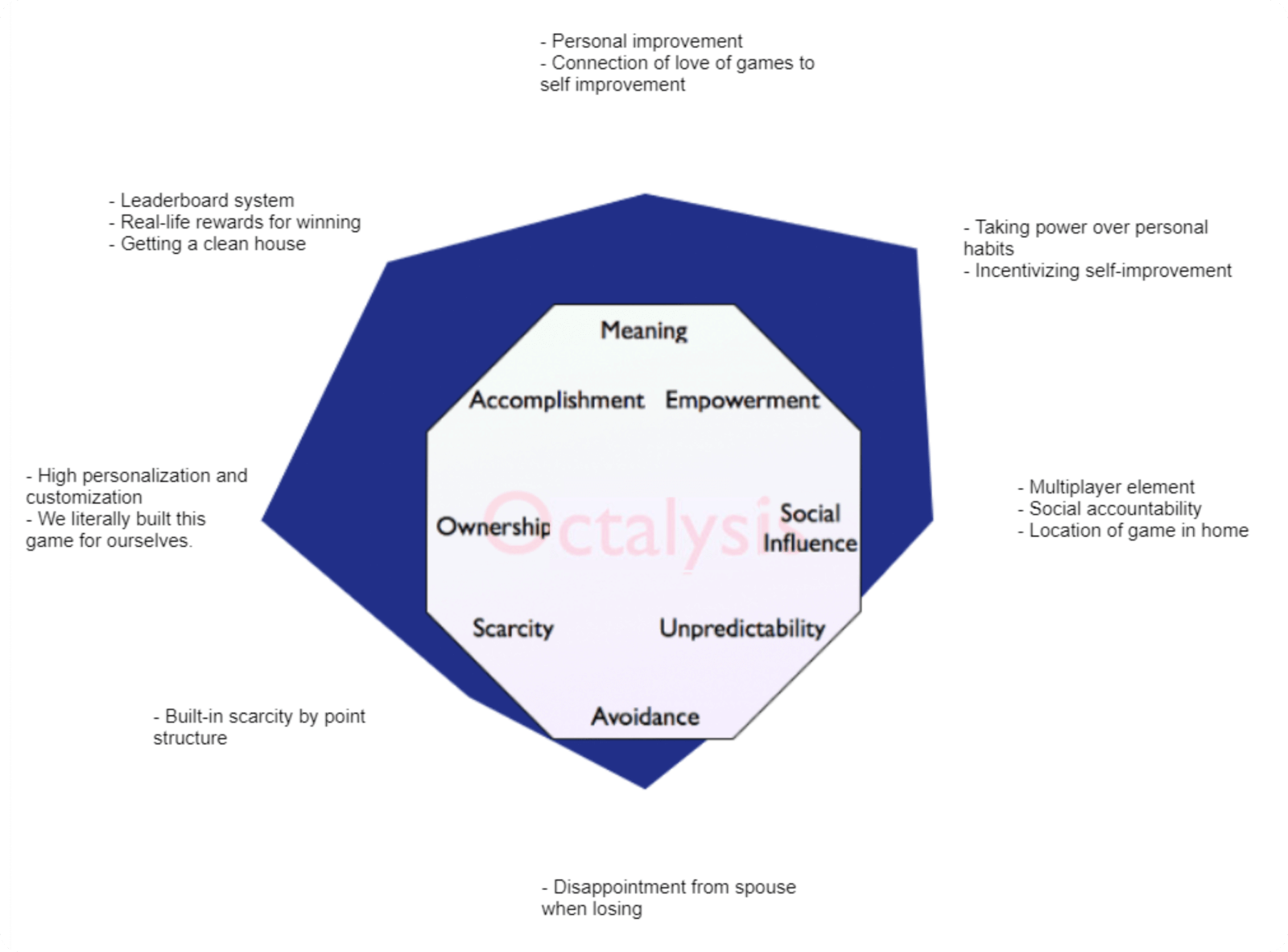
Initial Sketches
I kicked off my design process by concept sketching. I explored various ways I could solve the problem, then re-sketched the ideas that stood out.
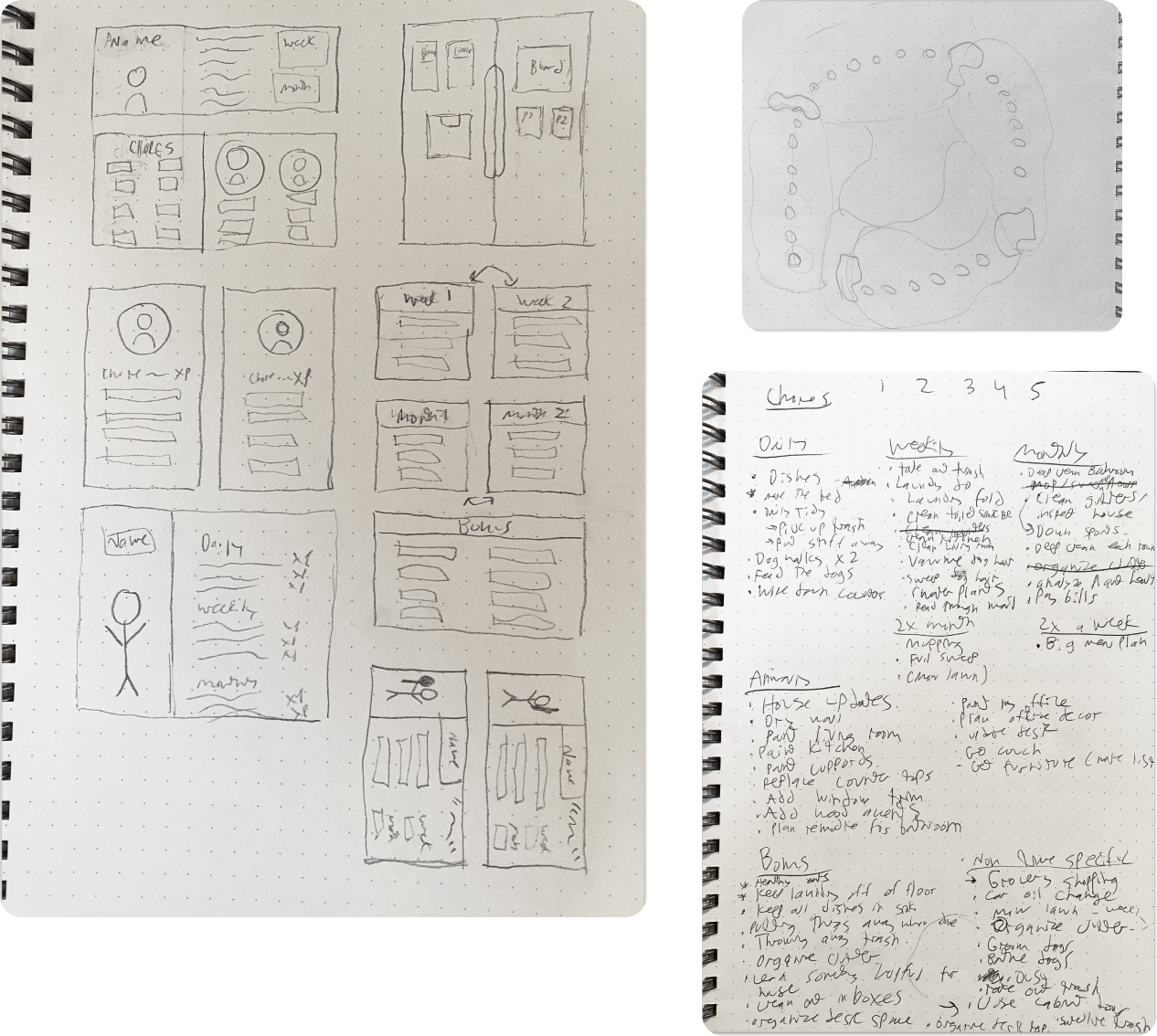
Wireframes
Once I had my creative direction set, I created a series of wireframes. This allowed me to iterate on the structure of the design while creating early-stage materials for testing.
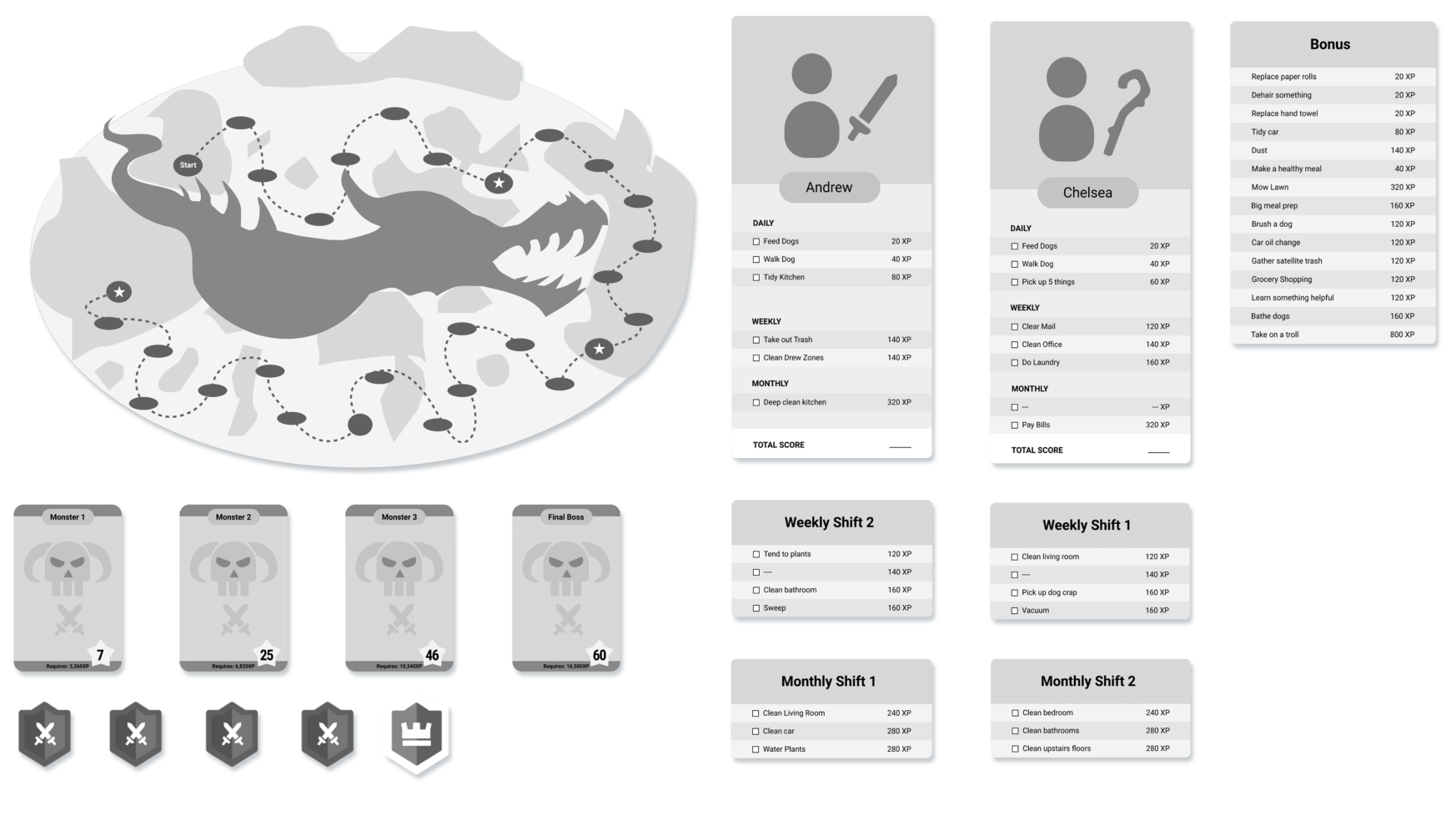
“User Testing”
I knew my first attempt would be far from perfect, so I printed out my wireframe set and used it for a month-long trial with Andrew
I refined the design on a weekly basis using white-out and sticky notes. This helped me refine the design, and determine its effectiveness before I got too invested.
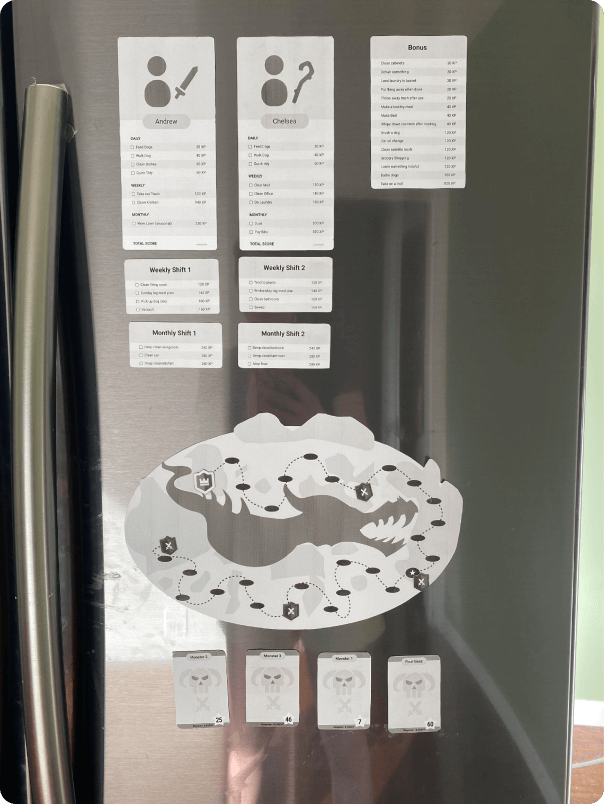
Final Design
I created the final design over the course of 1 month. I hand-sketched the illustrated assets, then vectorized them using adobe illustrator.
I created the cards in Figma, then exported the final product for printing. I got the pieces printed on glossy card stock paper and laminated so that I could easily pair them with dry-erase markers and added flat magnet sheets to the backs of each piece.
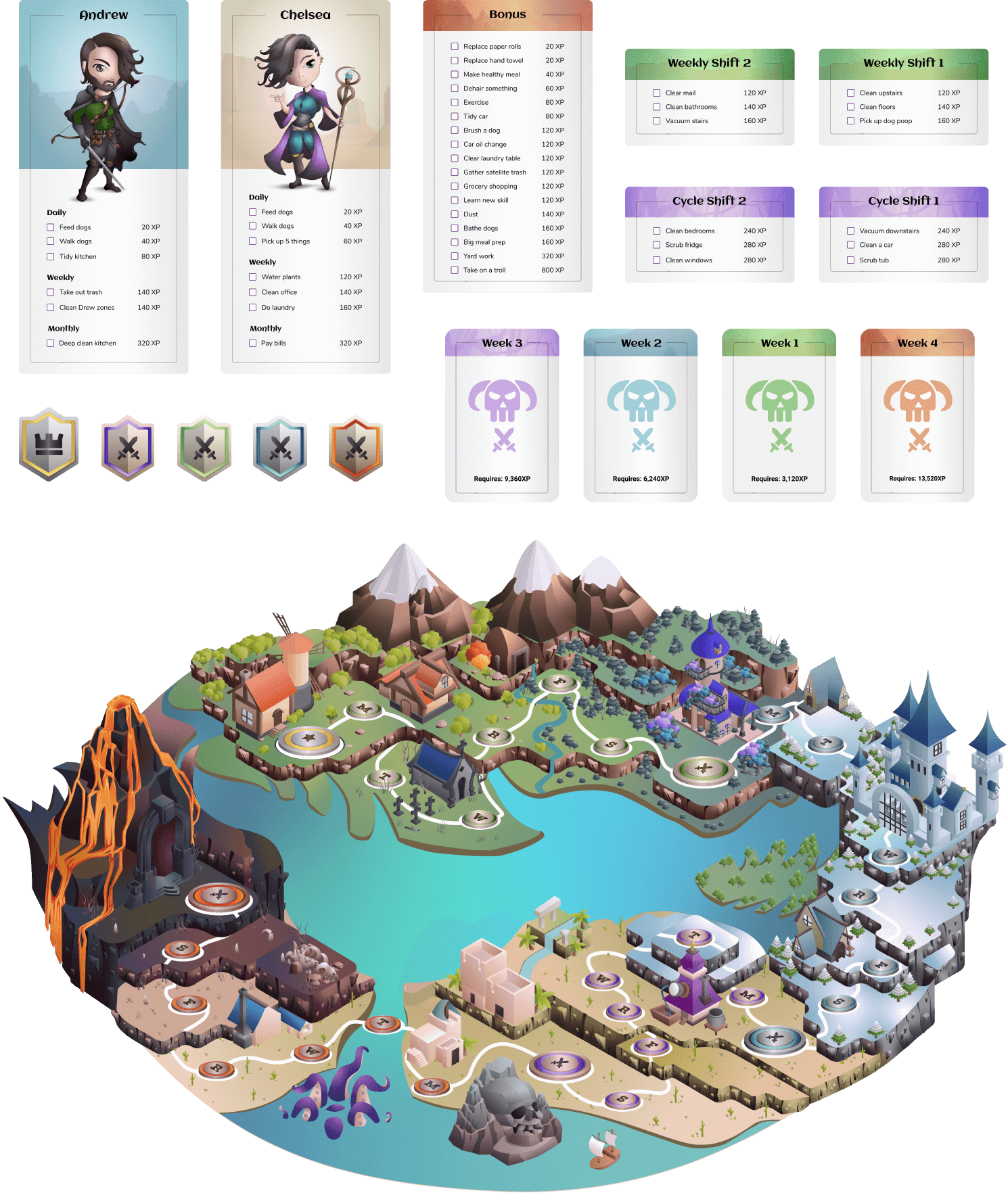
Key Features
Curated to Bring Joy
Accessibility and Inclusivity were paramount to the success of this project.
I made this game during the 2020 pandemic.
Times felt bleak, so to help encourage engagement, I made this game as upbeat and nostalgia-inducing as possible.
I made custom avatars and used a bright, colorful aesthetic throughout my designs and utilized game mechanics that resembled childhood video games we both played.
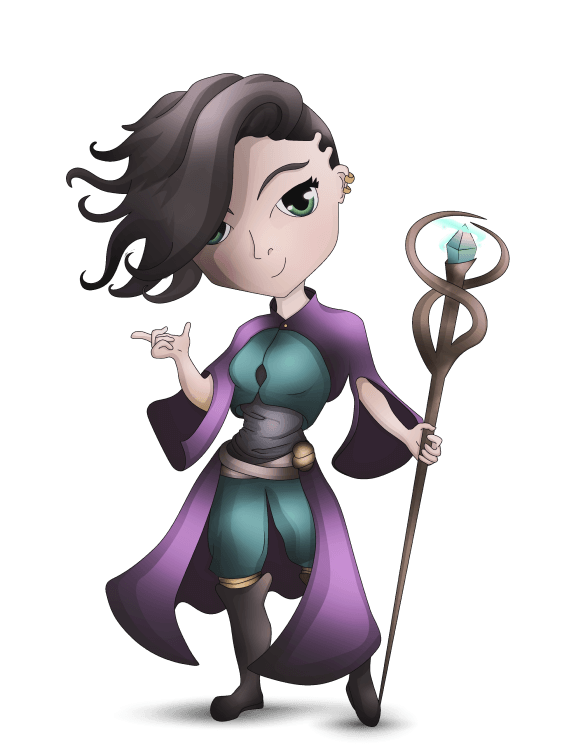
Points for Success
I created a point system that awards “experience points” upon completing each chore.
The purpose of this was to give little pinches of satisfaction throughout the chore process, while also creating a playful competition for whomever could get the most points.
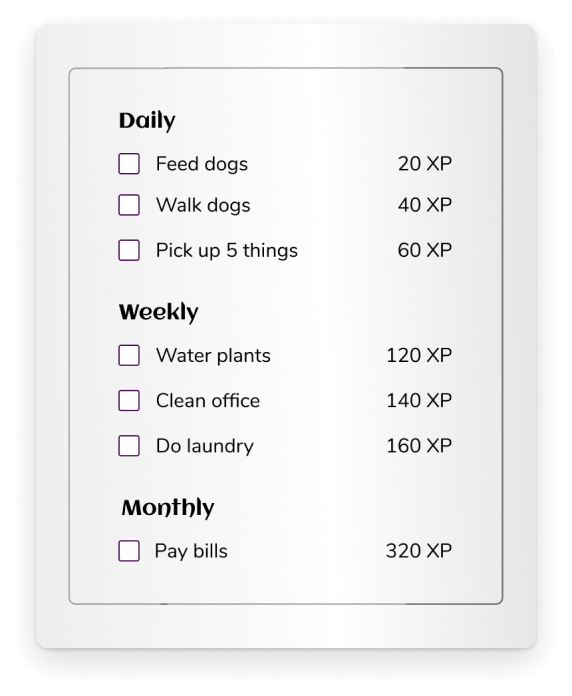
Shared Accountability
I created a series of game “bosses” that appeared at the end of each week.
To defeat them, we had to have enough combined points. This helped us keep each-other accountable, because it was impossible to win the game without both of us participating.
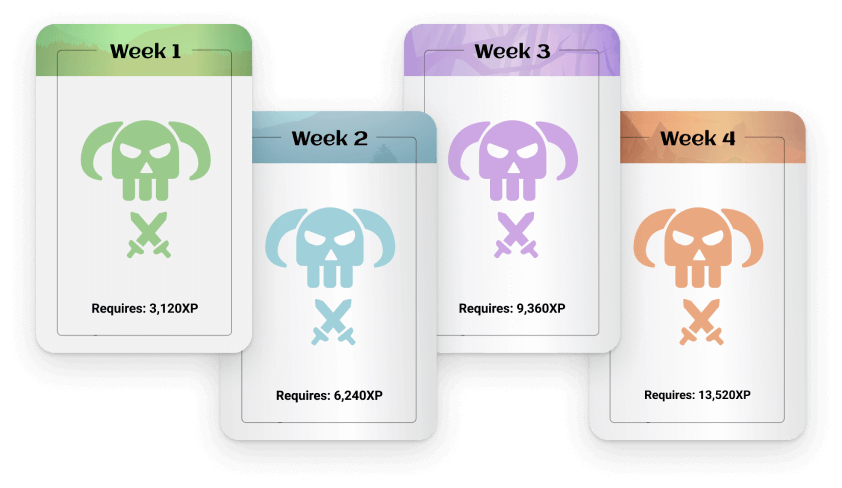
Reward for Victory
Each month a “treasure chest” was created. If all bosses were defeated within the month, the winner would get to open the chest.
Typically we chose rewards that were fun for both of us - such as a nice date night for two where the winner gets to pick the restaurant.
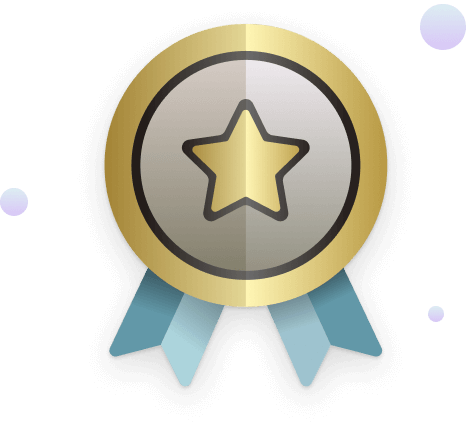
Conclusion
During the year that followed, this game improved my household’s cleaning habits and helped add bits of joy in otherwise mundane tasks. It was a fun exercise in applied UX design and gave me a great opportunity to learn about industrial gamification.
While this work was done as a personal project, I ended up using it at my workplace as part of our lesson series for apprentice designers. I found this helpful for teaching about user-centered design logic, while also adding a dose of silliness to put new learners at ease.
